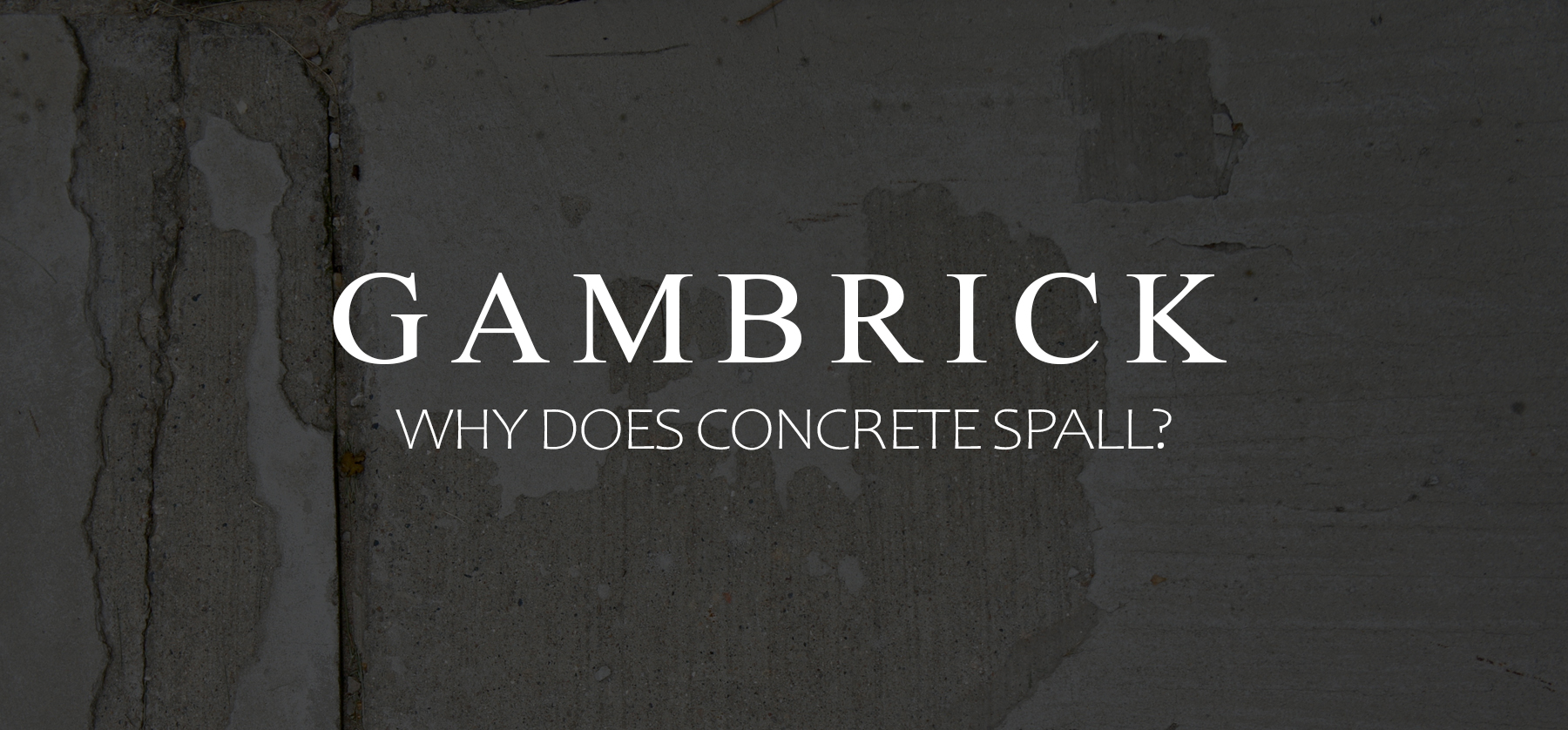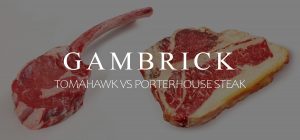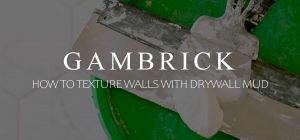
Why Does Concrete Spall?
Spalling appears as flakes or chips coming off the concrete surface. The most common cause of concrete spall is the freeze/thaw cycle. When moisture held inside the concrete expands and contracts with temperature changes, it creates pressure. Over time, as the pressure rises and falls, it stresses the thin surface layer of the concrete, which leads to spalling. The outer layer of a concrete structure tends to be weaker than the inside because there’s less mass and less aggregate to bind it all together. The thin outer layer is usually higher in cement with makes it flaky and easier to chip and crack.
Spalling is one of the most common problems affecting concrete structures, including buildings, car parks, jetties, bridges, foundations, steps, sidewalks and patios. Anything made from concrete is susceptible to spalling. And it’s more then just a cosmetic issue.
Spalling can significantly affect the safety and security of a concrete structure and compromise its structural integrity. As a result, the concrete structure has a reduced asset value, can need repair or complete replacement.
When concrete is being finished, masons push the stones down into the concrete with a jig. They do this in order to smooth the surface with a trowel. But it makes the surface layer much weaker because there are no stones to strengthen it. The top layer of a concrete slab is mostly cement which cracks and flakes easily. This is spalling.
A few things you can do to prevent spalling is using a sealant, adding control joints, and using reinforcement like rebar.
In general, concrete deterioration can be caused by spalling, leaching, cracking, scaling, sweat, and joint deterioration. These forms of deterioration vary in degrees and cause durability issues experienced by many concrete structures.
What is Concrete Spalling?
There are a few different reasons why concrete can spall. Below we’ll discuss the most common.
Spalls, also known as potholes, are dish-shaped cavities in reinforced concrete surfaces. These cavities range from one to several inches in depth and several square feet in surface area. Most concrete will spall until it reaches the stones.
Research shows that spalls occur individually or in groups that can cover a few hundred square feet. Delaminations are horizontal fractures that preceded spalling. It develops parallel to the exposed surface of the concrete.
Because fractures originate at corrosion, they can damage the concrete surface due to embedded reinforcement or metal. As a result, it migrates to the nearest surface. Traffic action, freeze-thaw, and other types of corrosion influence the spall development and fracture migration rate.
The freeze/thaw cycle is by far the most common reason why concrete spalls. Freezing water expands which creates pressure. And concrete is a very porous material which means it can absorb a lot of water. This can lead to cracked concrete in areas that are weaker. This is most commonly found along the thin outer edge where there’s less aggregate to bind concrete together. As moisture freezes, expands, and later contracts, it can weaken the thin outer layer of concrete which eventually starts to chip away.
Common Causes of Concrete Spalling
The exceptional durability of concrete is the primary reason individuals and companies use it in construction projects. However, material design, limitations, construction practices, and exposure to the elements can cause spalling.
When spalling occurs, it can lead to aesthetic, structural, and functional problems. Concrete can spall for a wide range of reasons, and damage often results from a combination of factors. Here are a few causes of why concrete spalls.
Corrosion of Embedded Metals
Corrosion of steel and other metals is one of the leading causes of concrete spalling. For instance, when steel or any other embedded metal corrodes, it creates rust that occupies a greater volume than the metal.
As a result, the expansion leads to tensile stresses in the concrete, leading to spalling and delamination. Steel undergoes corrosion because it is not natural, and companies smelt and refine iron to produce steel.
The production process involves transforming iron ore into steel which strengthens the metal but also leaves it susceptible to rust. If rebar is fully encases in concreteit will not rust. But, if cracks lead all the way to the rebar, it can rust and cause spalling.
Because concrete acts as an electrolyte and the wire ties provide the metallic connection and chair support, it can cause corrosion of embedded metal, leading to spalling, cracking, and delamination.
Thermal Stress
Concrete can develop strong thermal gradients when exposed to the sun because it has low thermal conductivity. On the other hand, concrete has a high specific heat that can induce compressive stresses close to the surface.
Remember, spalling occurs when there are tensile stresses and restrained thermal expansion in the cooler interior regions. Applied loading or pre-stress may also augment the surface compression, leading to spalling.
Pore Pressure
Heat can cause water vapors and expansion of concrete, resulting in increased pore pressure. Vapor migration to the concrete can result in wet zones or moisture clogs. The vapor front reaches a maximum pore pressure at some distance from the hot concrete surface.
Besides, the distance of this point from the hot concrete surface depends on the permeability of the material. Spalling due to pore pressure occurs when maximum pore pressure is more than the concrete’s local tensile strength.
Water
The most common reason I see spalling occur is water.
Water can cause spalling in a concrete structure and other forms of damage. Concrete is very porous and absorbs water easily when it’s not sealed. That water can then freeze inside the concrete which creates a lot of pressure. The concrete expands inside due to the pressure which can eventually crack the concrete. Those cracks can spread and start to chip or flake pieces of concrete off the surface.
The reason why concrete chips at the surface is because there are no stones to hold it together. Masons push the stones below the surface to make the finish look better. This means all you have on top is a thin layer of cement. And cement chips easily.
In some cases, the stones could have been pushed down an inch or more. This means you’ll have a thick layer of cement that can keep cracking before you reach the strong stones.
The way to avoid spalling due to water is by sealing the concrete. This is especially important with flat concrete work like patios and driveways. Because the surface is flat, water sits on the surface and soaks in. And because it’s a finished concrete surface, masons push the stones way down and trowel the concrete smooth. This means that top layer is nothing but cement.
Other Causes
Concrete spalling also occurs due to fire exposure, leading to changes in free water by creating expansive pressure in the material. Freeze and thaw cycling, alkali-silica reaction, low-quality material, inadequate cover depth over reinforcement, etc., are other causes of concrete spalling. An inappropriately constructed joint can cause joint spalling and damage the structure. Bond failure is another cause of spalling due to shrinkage between base and topping.
Although the most common reason we see spalling occur is the freeze/thaw cycle, there are lots of potential causes. The second most common is poor quality concrete. If the correct ratios of ingredients aren’t used or the ingredients are of poor quality, the concrete could have weak spots which are easy to chip and flake.
A poor mix is also a very common reason why concrete spalls. If too much water is used during the mix it weakens concrete quite a bit. This can lead to a very low psi concrete which is easy to crack.
Summary: Why Does Concrete Spall?
Spalling appears as flakes or chips coming off the concrete surface. The most common cause of concrete spall is the freeze/thaw cycle. When moisture held inside the concrete expands and contracts with temperature changes, it creates pressure. Over time, as the pressure rises and falls, it stresses the thin surface layer of the concrete, which leads to spalling. The outer layer of a concrete structure tends to be weaker than the inside because there’s less mass and less aggregate to bind it all together. The thin outer layer is usually higher in cement with makes it flaky and easier to chip and crack.
Spalling is one of the most common problems affecting concrete structures, including buildings, car parks, jetties, bridges, foundations, steps, sidewalks and patios. Anything made from concrete is susceptible to spalling. And it’s more then just a cosmetic issue. Spalling can significantly affect the safety and security of a concrete structure and compromise its structural integrity. As a result, the concrete structure has a reduced asset value, can need repair or complete replacement.
When concrete is being finished, masons push the stones down into the concrete with a jig. They do this in order to smooth the surface with a trowel. But it makes the surface layer much weaker because there are no stones to strengthen it. The top layer of a concrete slab is mostly cement which cracks and flakes easily. This is spalling.
If you have any questions or comments about concrete E-mail any time.

John Mazzuca | About | More Posts |
Custom Home Builder
John Mazzuca is a custom home designer and builder at Gambrick with over 25 years experience in the construction industry. John has designed, built and/or remodeled hundreds of homes, small buildings, and commercial projects. He writes about business, real estate, home building, and household electronics. His work has been featured in Fox Business, Better Homes & Garden, House Beautiful, and more.




















